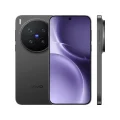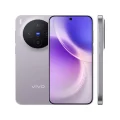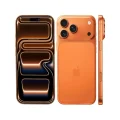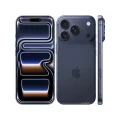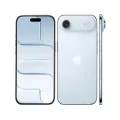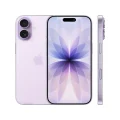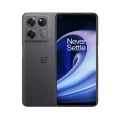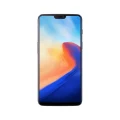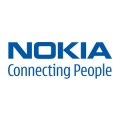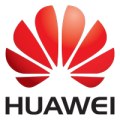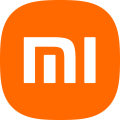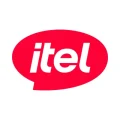- Home
- All Products
- Google Pixel
- Google Pixel 9
Google Pixel 9
-
Battery: 4700 mAh
-
RAM: 12GB
-
Storage: 128GB, 256GB
-
Display: OLED,6.3 inches,
-
Camera: Rear 50 MP+48 MP and Front 10.5 MP
-
OS: Android 14, upgradable to Android 15, up to 7 major Android upgrades
Full Specifications
Price
| Unofficial | 69990 BDT 12GB/128GB Approx. |
General
| Model | Google Pixel 9 |
| Announced | 2024, August 13 |
| Released | 2024, August 22 |
| Status | Available |
Design
| Dimensions | 152.8 x 72 x 8.5 mm (6.02 x 2.83 x 0.33 in) |
| Weight | 198 g (6.98 oz) |
| SIM SIM (Subscriber Identity Module) is a small card that contains mobile network subscriber's account information. This allows the phone using the card to attach to a mobile network. The SIM card is most commonly associated with GSM and UMTS mobile networks. Moving a SIM card from one phone to another allows a subscriber to switch mobile phones without having to contact their mobile network carrier. SIM cards can also be used by a phone to store limited amounts of data, such as phone numbers and text messages. |
Nano-SIM + eSIM IP68 dust/water resistant (up to 1.5m for 30 min) |
| Colors | Obsidian, Porcelain, Wintergreen, Peony |
Display Specification
| Display Type Display Technology => A number of display technologies and types used in mobile phones => TFT (Thin Film Transistor), IPS (In-Place Switching), OLED (Organic Light Emitting Diode), AMOLED (Active-Matrix Organic Light-Emitting Diode), Super AMOLED (an even advanced version of AMOLED), Resistive Touchscreen (Resistive touchscreens contain two layer of conductive material with a very small gap between them which acts as a resistance), Capacitive Touchsceen (Capacitive touchscreen technology consists of a layer of glass coated with a transparent conductor) | OLED, 120Hz, HDR10+, 1800 nits (HBM), 2700 nits (peak) |
| Size | 6.3 inches, 94.7 cm2 |
| Resolution | 1080 x 2424 pixels, 20:9 ratio |
| Pixel Density Pixel Density (PPI) is refers to the concentration of pixels on a particular display, measured in pixels per inch (ppi). Pixel density is calculated by dividing the diagonal pixel resolution of a display by its diagonal size, higher pixel density better display quality. | 422 ppi density |
| Display Protection Display Protection => Gorilla Glass is a special alkali-aluminosilicate glass shield with exceptional damage resistance that helps protect mobile displays from scratches, drops, and bumps of everyday use, It is always better to go for a smartphone with Gorilla Glass for that added protection and peace of mind. | Corning Gorilla Glass Victus 2 Always-on display |
Platform
| Operating System OS => Every computer system run on a base software called Operating System (OS). Operating System controls all basic operations of the computer (such as smartphone, PDAs, tablet computers and other handheld devices). The Operating System allows the user to install and run third party applications (apps), apps are used to add new functionality to the device. | Android 14, upgradable to Android 15, up to 7 major Android upgrades |
| Chipset Chipset is a group of integrated circuits designed to perform one or a more dedicated functions, often with real time computing constraints, Popular smartphones are equipped with more advanced embedded chipsets that can do many different tasks depending on their programming. | Google Tensor G4 (4 nm) |
| CPU CPU (Central Processing Unit) mostly known as processors, CPU processes instructions in order to carry out certain functions that make your device operate properly. Processors are often described as the brain of computers, smartphones and tablets, Smartphones and tablets rely on processors to carry out their every task, Processors are an incredibly important factor in selecting any type of computing device, including your smartphone. | Octa-core (1x3.1 GHz Cortex-X4 & 3x2.6 GHz Cortex-A720 & 4x1.92 GHz Cortex-A520) |
| GPU GPU (Graphics Processing Unit) is a single-chip processor designed to rapidly manipulate and alter memory to accelerate the creation of images in a frame buffer intended for output to a display, This includes things such as lighting effects, object transformations, and 3D motion. | Mali-G715 MC7 |
Main Camera
| Camera Setup | Dual |
| Resolution |
50 MP, f/1.7, 25mm (wide), 1/1.31", 1.2µm, dual pixel PDAF, OIS 48 MP, f/1.7, 123˚ (ultrawide), 1/2.55", dual pixel PDAF |
| Features | Single-zone Laser AF, LED flash, Pixel Shift, Ultra-HDR, panorama, Best Take |
| Video | 4K@24/30/60fps, 1080p@24/30/60/120/240fps; gyro-EIS, OIS, 10-bit HDR |
Selfie Camera
| Camera Setup | Single |
| Resolution | 10.5 MP, f/2.2, 20mm (ultrawide), 1/3.1", 1.22µm, PDAF |
| Video | 4K@30/60fps, 1080p@30/60fps |
| Features | HDR, panorama |
Network & Connectivity
| Technology | GSM / HSPA / LTE / 5G |
| Speed | HSPA, LTE (CA), 5G |
| Wi-fi Wi-Fi is a popular wireless networking technology using radio waves to provide high-speed network connections that allows devices to communicate without cords or cables, Wi-Fi is increasingly becoming the preferred mode of internet connectivity all over the world. | Wi-Fi 802.11 a/b/g/n/ac/6e/7, tri-band |
| Bluetooth Bluetooth is a wireless communications technology for exchanging data between mobile phones, headsets, computers and other network devices over short distances without wires, Bluetooth technology was primarily designed to support simple wireless networking of personal consumer devices. | 5.3, A2DP, LE, aptX HD |
| NFC NFC (Near field communication) is a set of standards for smartphones and similar devices to establish peer-to-peer radio communications with each other by touching them together or bringing them into proximity, usually no more than a few inches. | Yes |
| Positioning | GPS (L1+L5), GLONASS, GALILEO, BDS, QZSS, NavIC |
| FM Radio | No |
| Infrared port | No |
| USB | USB Type-C 3.2 |
| 2G Network | GSM 850 / 900 / 1800 / 1900 |
| 3G Network | HSDPA 800 / 850 / 900 / 1700(AWS) / 1900 / 2100 |
| 4G Network |
1, 2, 3, 4, 5, 7, 8, 12, 13, 14, 17, 18, 19, 20, 25, 26, 28, 29, 30, 38, 40, 41, 48, 66, 71 - G2YBB 1, 2, 3, 4, 5, 7, 8, 12, 13, 14, 17, 18, 19, 20, 21, 25, 26, 28, 29, 30, 32, 38, 39, 40, 41, 42, 48, 66, 71, 75 - GUR25 |
| 5G Network |
1, 2, 3, 5, 7, 8, 12, 14, 20, 25, 26, 28, 29, 30, 38, 40, 41, 48, 66, 70, 71, 77, 78, 258, 260, 261 SA/NSA/Sub6/mmWave - G2YBB 1, 2, 3, 5, 7, 8, 12, 14, 20, 25, 26, 28, 30, 38, 40, 41, 66, 71, 75, 76, 77, 78, 79 SA/NSA/Sub6 - GUR25 |
Battery
| Battery Type Battery Type => Cell phones run on various kinds of batteries depending on the manufacturer, phone size or shape and features. There are basically four types of cell phone batteries => Lithium Polymer, Lithium Ion, Nickel Metal Hydride and Nickel Cadmium. | Li-Ion (Lithium Ion) |
| Capacity Battery Capacity is a measure (typically in Amp-hr) of the charge stored by the battery, and is determined by the mass of active material contained in the battery. The battery capacity represents the maximum amount of energy that can be extracted from the battery under certain conditions. | Li-Ion 4700 mAh |
| Removable | Yes |
| Charging |
27W wired, PD3.0, PPS, 55% in 30 min 15W wireless (w/ Pixel Stand) 12W wireless (w/ Qi compatible charger) Reverse wireless Bypass charging (w/ "Limit to 80%" option enabled) |
| Wireless Charging Wireless Charging (Inductive Charging) uses an electromagnetic field to transfer energy between two objects. This is usually done with a charging station. Energy is sent through an inductive coupling to an electrical device, which can then use that energy to charge batteries or run the device. | Yes |
Multimedia
| Loudspeaker | Yes, with stereo speakers |
| Audio Jack | No |
Storage
| Card Slot Memory Card Slot is a special slot for inserting a memory card. Memory cards allow you to expand the phone's built-in memory, A memory card (sometimes called a flash memory card or a storage card) is a small storage medium used to store data such as text, pictures, audio, and video, for use on small, portable or remote computing devices such as mobile phones, mp3 players, digital cameras. | No |
| Internal Storage Internal Storage is a data storage space (flash memory) mostly used in smartphones, tablets and other electronic devices where operating system, apps, music, photos, videos, files and other user data Is stored. |
128GB 12GB RAM, 256GB 12GB RAM UFS 3.1 |
Sensors
| Fingerprint | Yes, Under display, ultrasonic |
| Other Sensors | Accelerometer, gyro, proximity, compass, barometer Satellite SOS service Circle to Search |
PROS
- AI-powered performance with Tensor G4
- Stunning OLED display with smooth refresh rate
- Excellent camera with Google’s computational photography
- Long-term software support (7 years of updates)
CONS
- No telephoto lens (limited zoom beyond 3x)
- No expandable storage option
About the Google Pixel 9:
The Google Pixel 9, announced on August 13, 2024, is a feature-rich smartphone that offers a balance between performance and affordability. It boasts a 6.3-inch Actua OLED display with a resolution of 2424×1080 pixels, supporting a smooth refresh rate ranging from 60Hz to 120Hz. The device is powered by Google’s Tensor G4 processor, paired with 12GB of LPDDR5X RAM, and offers storage options of 128GB or 256GB. The camera system includes a 50MP main sensor and a 48MP ultrawide lens, delivering high-quality photography. The Pixel 9 is equipped with a 4,700mAh battery, supporting both fast wired and wireless charging. It runs on Android 14 and comes with a commitment to seven years of OS and security updates. The phone is available in various colors, including Peony, Wintergreen, Porcelain, and Obsidian.
While it lacks a telephoto camera lens, which limits zoom capabilities beyond 3x, it still offers a compelling package for those seeking a high-quality smartphone experience without the premium cost of the Pro models.
Overall, the Google Pixel 9 provides a solid smartphone experience, incorporating many features of its higher-end sibling, the Pixel 9 Pro, but at a more accessible price point.
Main Key Features:
- Display: 6.3-inch Actua OLED, 120Hz refresh rate
- Processor: Google Tensor G4 for smooth performance
- Camera: 50MP (main) + 48MP (ultrawide) for stunning photos
- Battery: 4,700mAh with fast wired & wireless charging
- Software: Android 14 with 7 years of updates
- Colors: Peony, Wintergreen, Porcelain, Obsidian
Opinion:
The Google Pixel 9 offers AI-powered performance, a stunning 6.3-inch OLED display, and a powerful Tensor G4 chip. With a 50MP camera, 120Hz refresh rate, and 7 years of updates, it’s a great choice for photography lovers and long-term users. The Pixel 9 delivers premium features at a competitive price.
See Others, Model:
FAQs about Google Pixel 9:
Q: Does the Google Pixel 9 support 5G?
A: Yes, the Pixel 9 supports 5G connectivity for faster internet speeds.
Q: Does the Google Pixel 9 have a good camera?
A: Yes, the 50MP main sensor and 48MP ultrawide lens deliver stunning photos with AI-powered enhancements.
Q: Does Pixel 9 have a telephoto lens?
A: No, the Pixel 9 does not have a telephoto lens, meaning zoom capabilities are limited beyond 3x.
Q: How long will the Google Pixel 9 get software updates?
A: Google promises 7 years of Android OS and security updates for the Pixel 9.
Q: What colors are available for the Pixel 9?
A: The Pixel 9 comes in Peony, Wintergreen, Porcelain, and Obsidian colors.
Q: Does the Google Pixel 9 have expandable storage?
A: No, the Pixel 9 does not support microSD cards, so you must choose between 128GB or 256GB storage options.
Q: Is the Google Pixel 9 waterproof?
A: Yes, the Pixel 9 is water and dust-resistant, but the official IP rating has not been confirmed.
Q: Does the Google Pixel 9 support wireless charging?
A: Yes! The Pixel 9 supports both fast wired and wireless charging for added convenience.
Give Your Review
Disclaimer Note
You can write your own disclaimer from APS Settings -> General -> Disclaimer Note.
